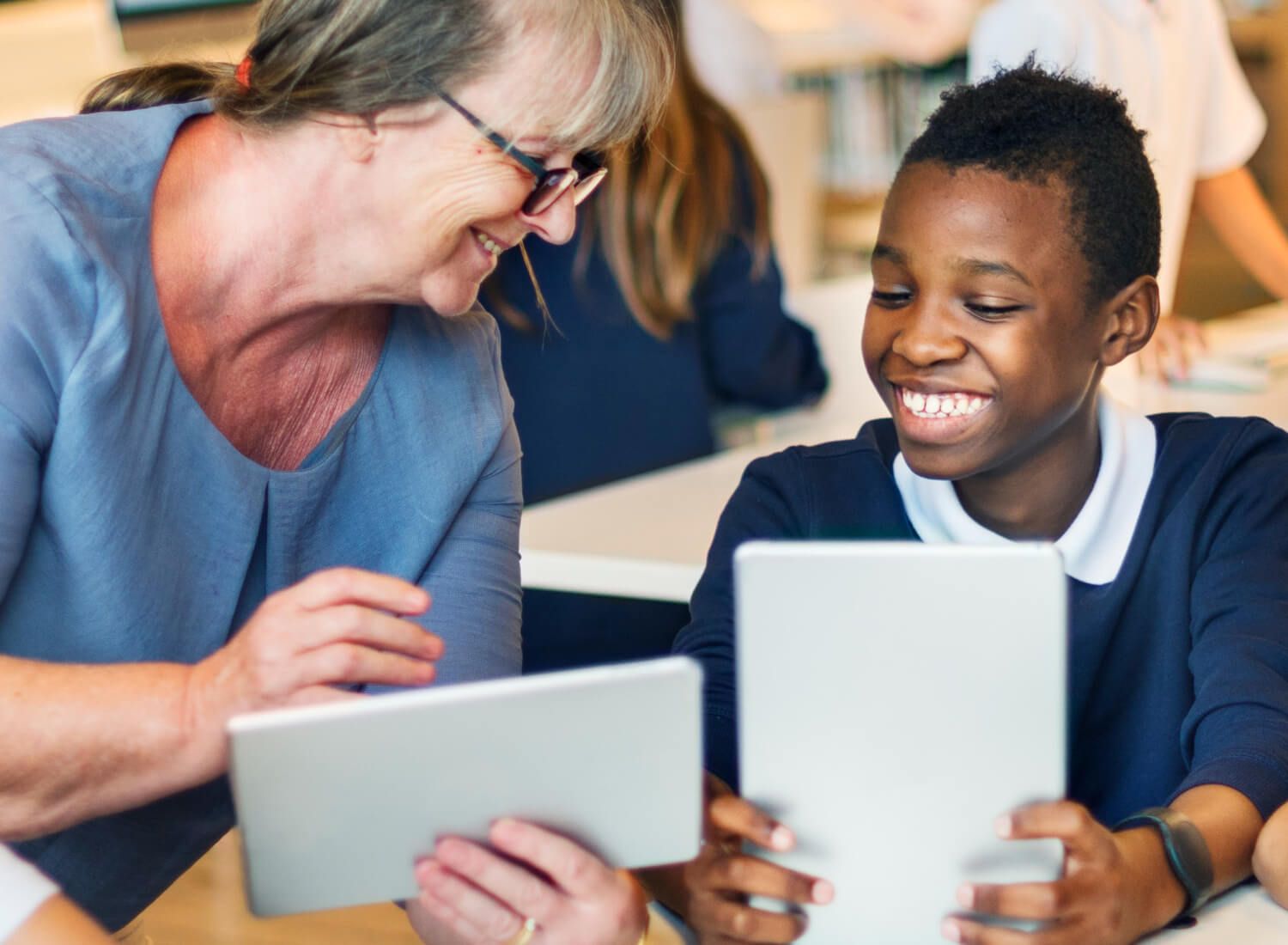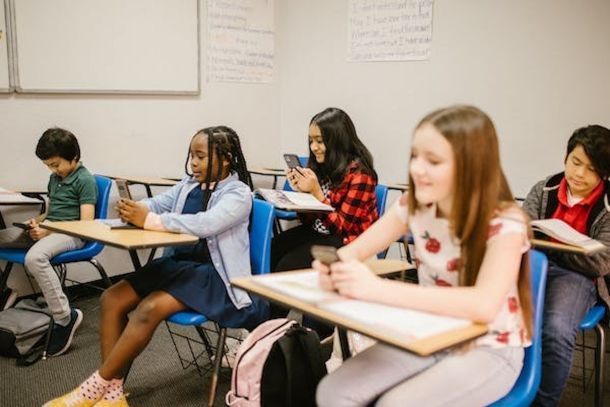
From Chalkboard to Keyboard: Integrating Technology in Teaching
Teaching has always been a very personal activity, where information is transmitted from one person (the teacher or mentor) to others (the students or mentees). The act of teaching bears a great personal side. The way teachers and students connect at a personal level weighs heavily on how information is absorbed and maintained. This is why integrating technology in teaching still faces important inertia, despite our fast-paced, technology-driven lives.
While some educators have eagerly embraced technological tools, others remain sceptical or hesitant to incorporate them into their classrooms. However, the benefits of integrating technology in the classroom are undeniable, particularly when it comes to classroom management and student progress tracking.
Why integrate technology in the classroom?
Why indeed. For centuries teaching has done very well without the interference of technology (in the modern sense of the word). So why change something that works?
Could technology deliver education better than a teacher can? The short answer – of course not. The point of technology is not to better the teacher, but to assist them.
Then why so much fuss about integrating technology in the classroom?
Just take a look around. Our world is increasingly interconnected. Information is readily available at our fingertips, literally. Children grow up in a tech-savvy environment. For them, tech tools feel as natural as pen and paper were for their parents or grandparents. To engage and prepare students for the future, educators must adapt their teaching methods to align with the digital age.
Benefits of tech integration in teaching
At Kinderpedia, discussing how technology can support teachers in their daily tasks is something we often emphasise - it’s a mantra for us. But then, we’re EdTech providers. We see these benefits as clear as day. On the other hand, for school managers or teachers, adopting a tech tool might feel like just another item on their never-ending to-do list. Hence the need for more clarification on why technology can become the strong ”right-hand” everyone wishes to have.
Easier classroom management
Integrating technology in the classroom can revolutionise teacher’s activity, making their lives more manageable and classrooms more focused on learning. A 2018 study by McKinsey Global shows that ” 20 to 40 percent of current teacher hours are spent on activities that could be automated using existing technology”.
As an end-to-end school management tool, Kinderpedia comes with functions that automate and simplify classroom management activities that are normally tedious and time consuming.
Activities like registering attendance, uploading class schedules, wrapping up administrative reports, planning lessons and homework, quick communicating with parents, and collaboration among teams can be done in just a few minutes, with very little effort.
💡Learn how to manage classroom activities with ease and save time.
Discover Kinderpedia
Enhanced engagement for students and their families
Teachers can leverage digital tools to create interactive lessons, multimedia presentations, and virtual field trips, which, in turn, makes learning more appealing to students. The result: improved comprehension and knowledge retention.
Moreover, specific tech functionalities enable seamless communication between teachers, students, and parents.
In Kinderpedia, everyone involved within the school community has real-time updates on assignments, progress, and school announcements.
Direct access to schedule, daily reports or media allows parents to stay informed about their child's progress, attendance, and upcoming assignments. This involvement fosters a supportive learning environment.
Access to resources and development of real-world skills
The wide variety of educational resources available on the internet (eg. videos, simulations, digital textbooks) add to the traditional teaching materials, enriching the learning process.
In addition, integrating technology in teaching also helps students develop essential digital literacy skills, which are increasingly valuable in today's job market. By using a classroom digital app, teachers can set a valuable example of how to make good use of technology, enrich knowledge, facilitate communication, and gain time for valuable projects.
Or, as one school manager using Kinderpedia on a daily basis puts it, the platform offers everything a 21st century school, parent or student might wish for to work smart and efficiently.
What about concerns regarding how students actually use the Internet and AI tools?
Cheating with AI is a reality and we just need to get used to it. Looking at the bright side, learning how to properly use such tools can improve reading and writing skills, problem-solving mentality, and even encourage imagination.
Student progress tracking with technology
Technology simplifies monitoring student progress in several ways. In Kinderpedia, for instance, with only a few clicks, teachers get grading reports. This provides immediate feedback to both teachers and students, helping all parties to quickly get „on the right track” and preventing them from persisting in error.
Moreover, as a school management system, Kinderpedia can collect and analyse data on student performance, identify trends and areas of improvement. This data-driven approach helps teachers tailor their teaching strategies to individual and group needs.
Personalised learning and behavioural management
Tech tools enable educators to identify areas where additional instruction is needed and facilitate personalised learning. This way, they can tailor content to individual student needs and provide customised learning experiences for students, as a group or individually.
Since the emergence of AI, there are educational tools that use artificial intelligence to adjust the difficulty of assignments and lessons based on individual student performance. This ensures that each student progresses at their own pace.
Classroom management apps and software can assist in tracking student behaviour and provide insights into disciplinary issues. This data-driven approach allows for early intervention and personalised support for students with behaviour challenges.
Why are teachers not using technology in the classroom?
Despite these compelling pros for integrating technology in teaching, some educators may still be reluctant to adopt these tools. There are several factors that contribute to teachers' hesitation when it comes to incorporating technology into their teaching methods. Let's explore the barriers that hinder tech adoption in the classroom.
Difficulty of use
Many educators feel ill-equipped to use technology effectively in the classroom. Just turning on the laptop or connecting the right cables may be a source of terrible frustration and headache. The reasons have nothing to do with some personal issues but with limited training and professional development opportunities. This is why, at Kinderpedia, we strive to deliver the necessary training and support along the way, so technology becomes a friend, not a foe.
Resistance to Change
Like in any profession, teachers can be resistant to change. As much as we try to normalise change, inertia is a natural state. The human brain is very fond of familiarity and very good at staying comfortable, so it resists any attempt to impose something new. That’s why some teachers may be more comfortable with preserving the traditional methods and reluctant to embrace new technologies. In such cases, baby steps always work. Integrating technology in teaching in incremental stages with a focus on the benefits may win the most reluctant hearts (or brains).
Budget Constraints
Limited funding can hinder schools' ability to acquire and maintain the necessary technology infrastructure and tools. Luckily, there is an increasing number of government programs to equip schools with the necessary technology. On the other hand, tech tools providers like Kinderpedia tailor the packages they offer to suit most schools and kindergartens so that everyone can have access to modern education.
Concerns About Equity
Teachers may worry that technology integration could exacerbate educational inequalities, as not all students have equal access to devices and internet connectivity. This is a reality we need to acknowledge and address. Educational institutions together with the business environment, NGOs, and the administration can work together to find solutions so that all children can benefit from technology in their learning journey.
To address these challenges, it's essential to provide teachers with the support and resources they need to integrate technology effectively. This includes ongoing training, access to affordable technology, and a commitment to bridging the digital divide.
Where technology is headed in education
The integration of technology in education is an ongoing journey with exciting developments on the horizon. As we look ahead, several trends and possibilities become clear:
AI-powered personalised learning: AI will continue to play a pivotal role in adapting content and assessments to each student's unique needs and preferences, creating more personalised learning experiences.
Virtual and Augmented Reality: Virtual and augmented reality technologies will enable immersive learning experiences, from virtual field trips to three-dimensional science simulations.
Online and mixed learning: While in-class learning has its indisputable benefits, the growth of online and mixed learning models cannot be ignored. As we understand better how to make the best use of them, they will provide students with more flexibility and access to a wide range of educational resources.
Data privacy and security: As technology use in education increases, protecting student data and ensuring privacy will be paramount, leading to stricter regulations and cybersecurity measures.
Teacher training and support: Continued investment in teacher training and professional development will be crucial to help educators harness the full potential of technology.
In conclusion, integrating technology in teaching is not just a trend but a necessity in today's education landscape. It enhances classroom management, simplifies student progress tracking, and ultimately improves learning outcomes. While challenges exist, the benefits far outweigh them. By providing teachers with the necessary support and resources, we can ensure that technology becomes a powerful ally in the pursuit of educational excellence. As we embrace the future, the possibilities for technology in education are limitless, promising a brighter and more innovative learning experience for all students.
Discover how to connect better with your students and create more engaging classes with Kinderpedia
Discover Kinderpedia

Kinderpedia
The complete communication and management solution for schools and childcare centres.
Simplifies teachers' work and brings parents closer to their children's school progress.
Recommended articles
Want to improve your center quality? Kinderpedia is here to help! Not only do we provide thousands of informational content pieces like blog posts, podcasts, webinars and more, we are also makers of the #1 Rated and Reviewed Childcare Software.







